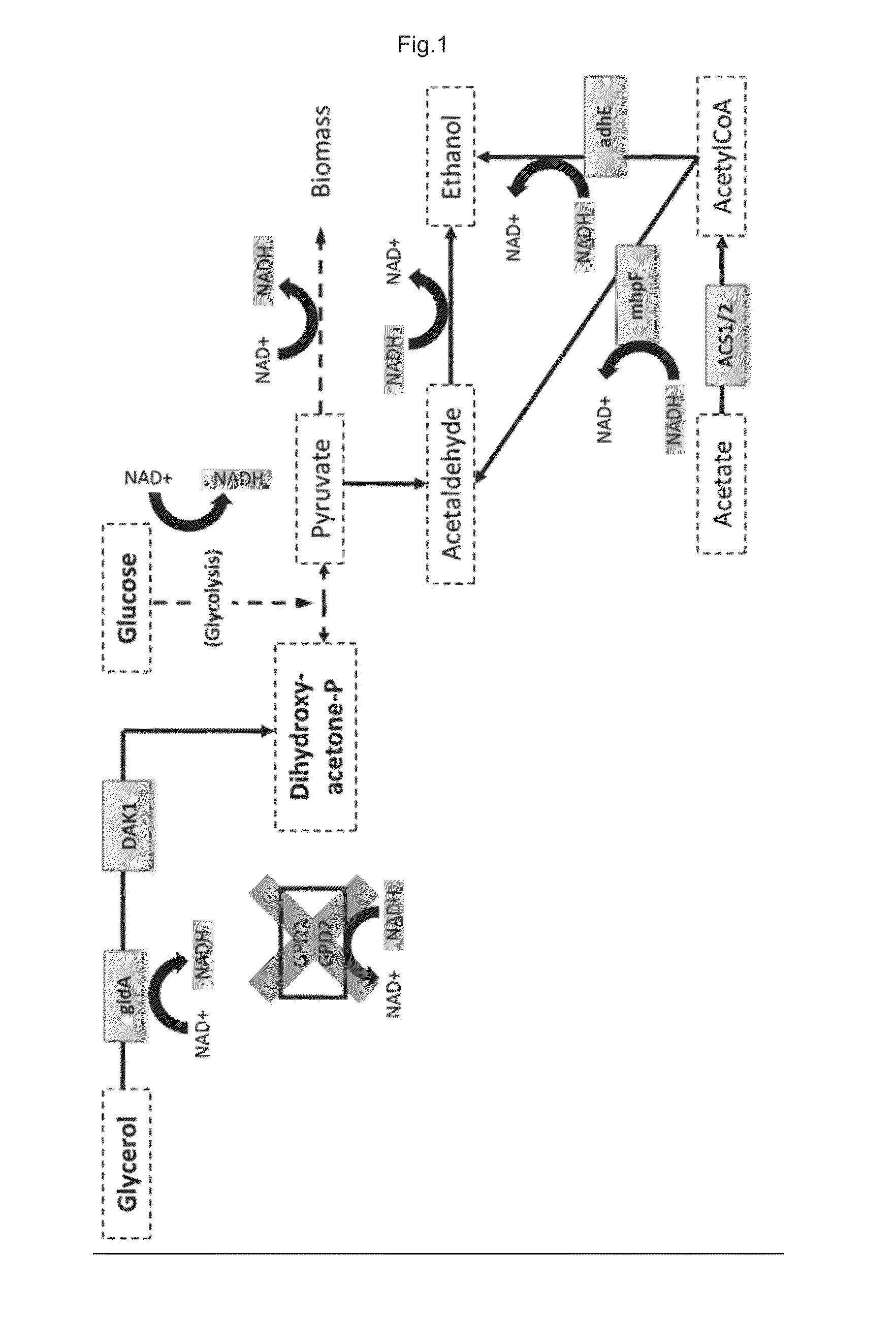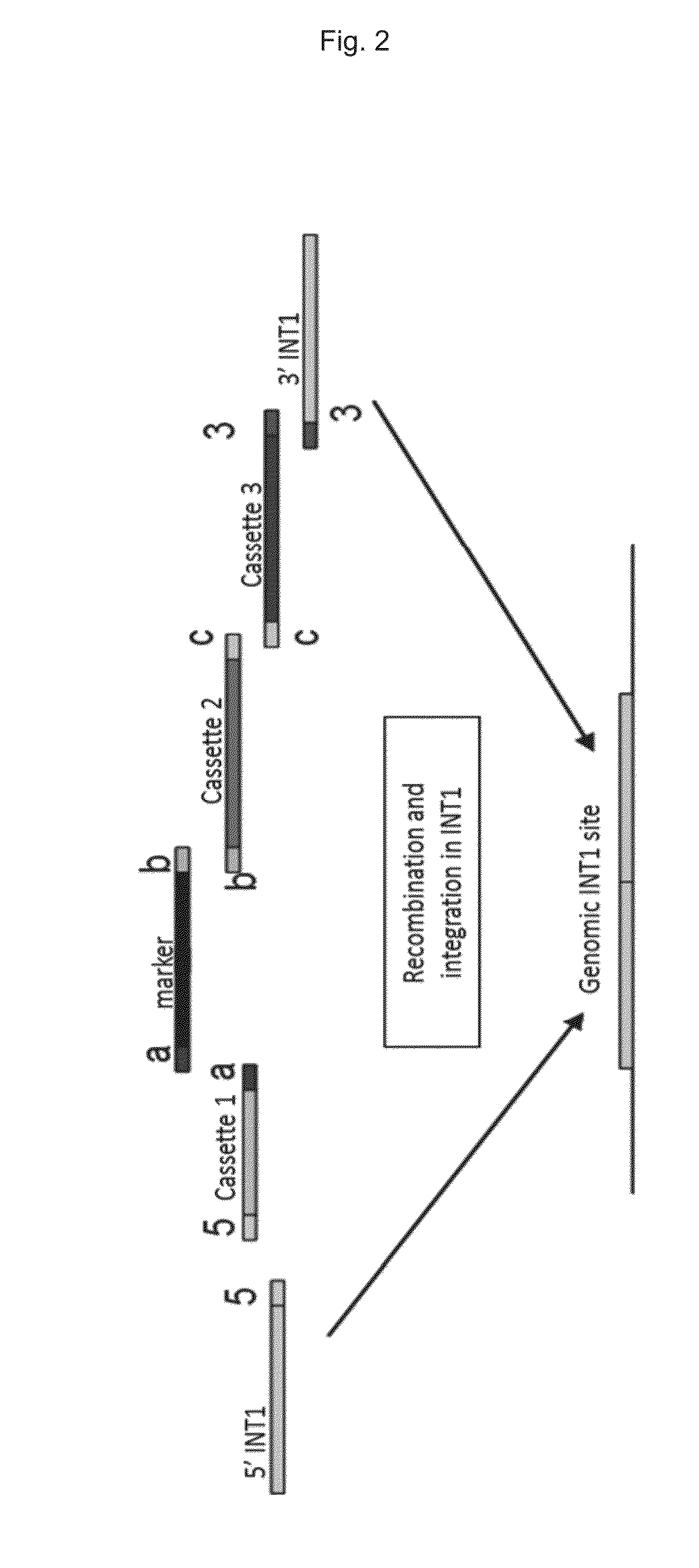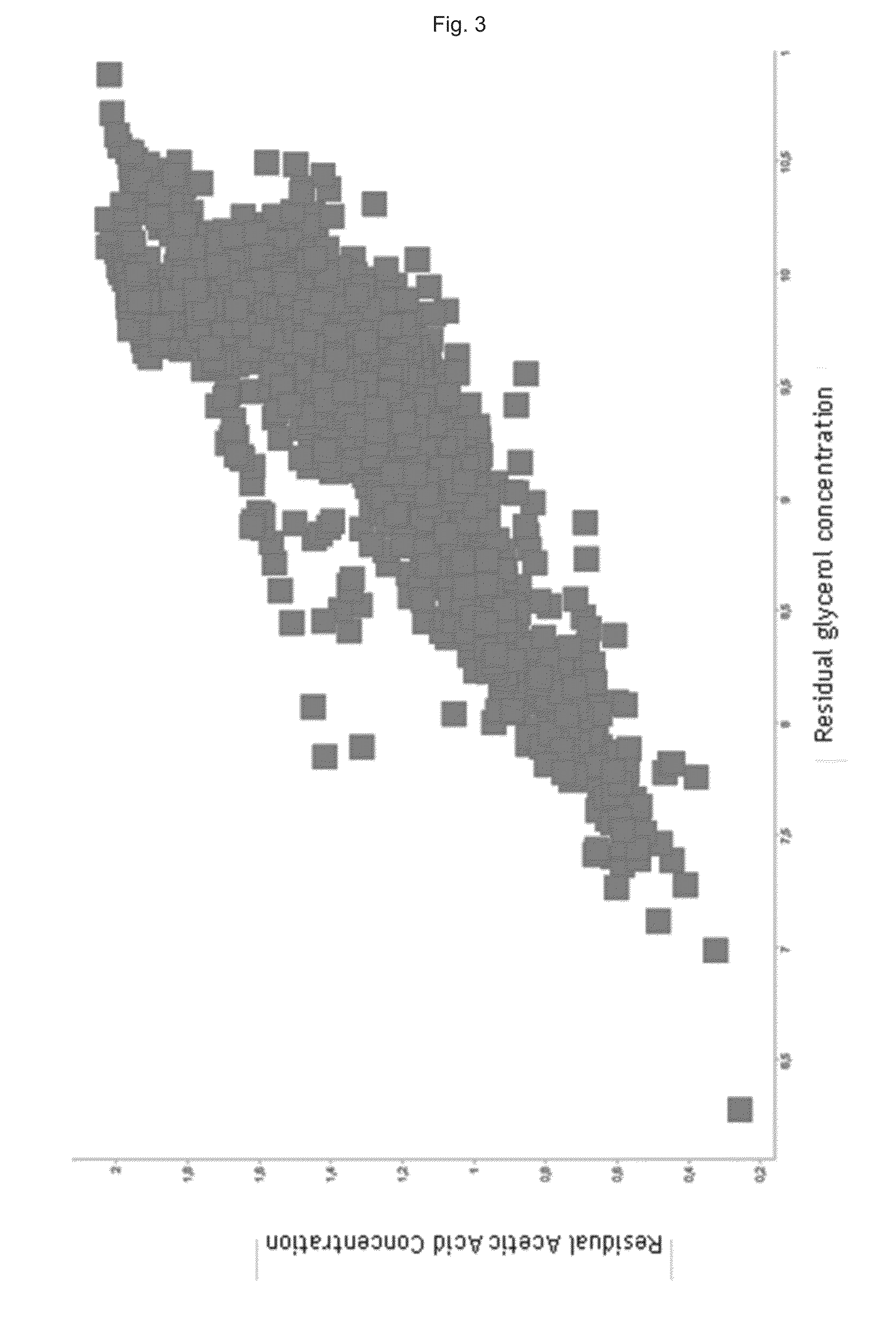Glycerol and acetic acid converting yeast cells with improved acetic acid conversion
a technology of acetic acid and glycerol, which is applied in the direction of enzymology, ligases, transferases, etc., to achieve the effect of increasing the production of fermentation products
- Summary
- Abstract
- Description
- Claims
- Application Information
AI Technical Summary
Benefits of technology
Problems solved by technology
Method used
Image
Examples
example 1
Construction of the Full Combinatorial Array of Yeast Transformants
[0291]The full combinatorial array of strains was constructed as described above. To this end, strain RN1069 was transformed with all 1280 mixes of genes (vide supra). Transformation mixes were plated on YEP-agar containing 20 g glucose per liter and 200 μg G418 / ml.
From each transformation, two independent transformants were selected and transferred to YEPD agar in microplates (one colony per well). On each microplate, a reference strains was inoculated as well: RN1189.
example 2
Growth Experiment and Analysis of the Results
[0292]The array of selected colonies and strains (Example 1) was tested in the experimental set-up described in the Material and Methods.
In short, the strains in the microplate with YEPD-agar were used to inoculate, 275 μl Mineral Medium containing 200 μg histidine per ml, 2% glucose, 2% xylose, 1% glycerol and 2 g / l acetic acid, in microplates. The pH of the medium was set at 4.5, below the pKa of acetic acid. The microplate was sealed and incubated for 48 hours under anaerobic conditions. Cells were spun down by centrifugation and the supernatant was analyzed by NMR. The top 150 results are given in table 11.
TABLE 11Results of the growth experiments of the 150 best strains (top 150). In the first two columns the identificationof the strain experiments is given. In columns 3-6, the construct of the strain is given, for AADH, ACS, GLDA andDAK1. Columns 7-11 indicates the results of the fermentation, concentrations (g / l) of glucose, xylose...
example 3
Retesting of the Best Combinations of Expression Cassettes
[0306]In a multifactorial design, the best combinations of expression cassettes (Example 2) were re-tested. Since in strain YD01247 the expression of the ACS2-gene was under control of the construct with the weak promoter (i.e. CAS12), this expression cassette was taken along in the experimental design as well, though it was not overrepresented in the top 150 strains in Example 2.
Strain RN1069 was transformed with 8 combinations of expression cassettes selected from groups A, B, C and D (table 13).
TABLE 13Retesting best combinations of expression cassettesRetransformationGroup AGroup BGroup CGroup DR1CAS02CAS11CAS13CAS21R2CAS02CAS11CAS13CAS23R3CAS02CAS12CAS13CAS21R4CAS02CAS12CAS13CAS23R5CAS03CAS11CAS13CAS21R6CAS03CAS11CAS13CAS23R7CAS03CAS12CAS13CAS21R8CAS03CAS12CAS13CAS23
After transformation, cells were spread on YEP-agar supplemented with 20 g glucose / liter and 200 μg G418 / ml. Per transformation, eight independent colonies w...
PUM
| Property | Measurement | Unit |
|---|---|---|
| molar ratio | aaaaa | aaaaa |
| molar ratio | aaaaa | aaaaa |
| molar ratio | aaaaa | aaaaa |
Abstract
Description
Claims
Application Information
 Login to View More
Login to View More - R&D
- Intellectual Property
- Life Sciences
- Materials
- Tech Scout
- Unparalleled Data Quality
- Higher Quality Content
- 60% Fewer Hallucinations
Browse by: Latest US Patents, China's latest patents, Technical Efficacy Thesaurus, Application Domain, Technology Topic, Popular Technical Reports.
© 2025 PatSnap. All rights reserved.Legal|Privacy policy|Modern Slavery Act Transparency Statement|Sitemap|About US| Contact US: help@patsnap.com



